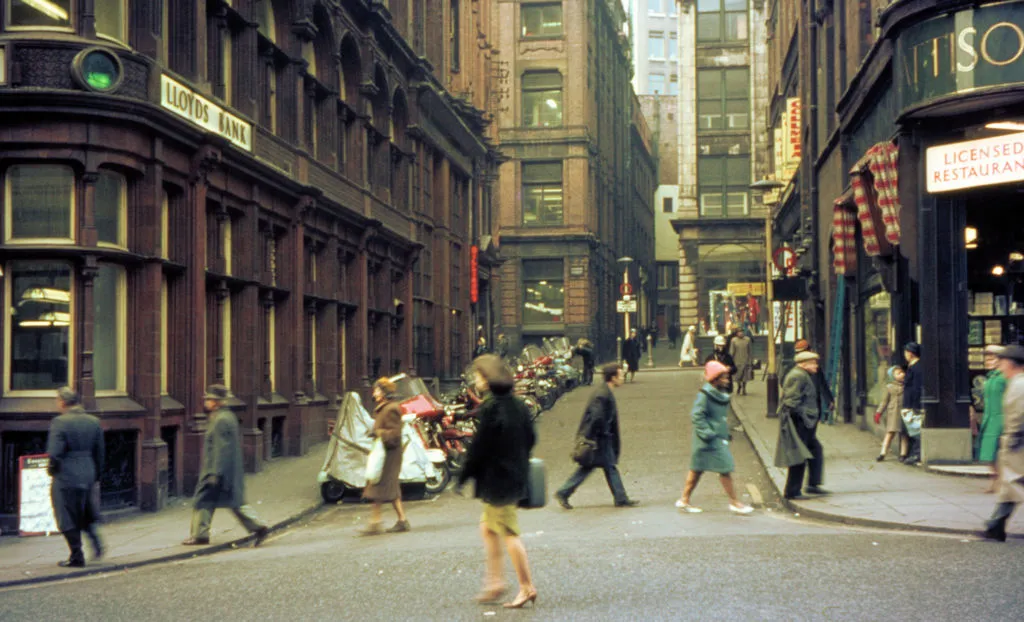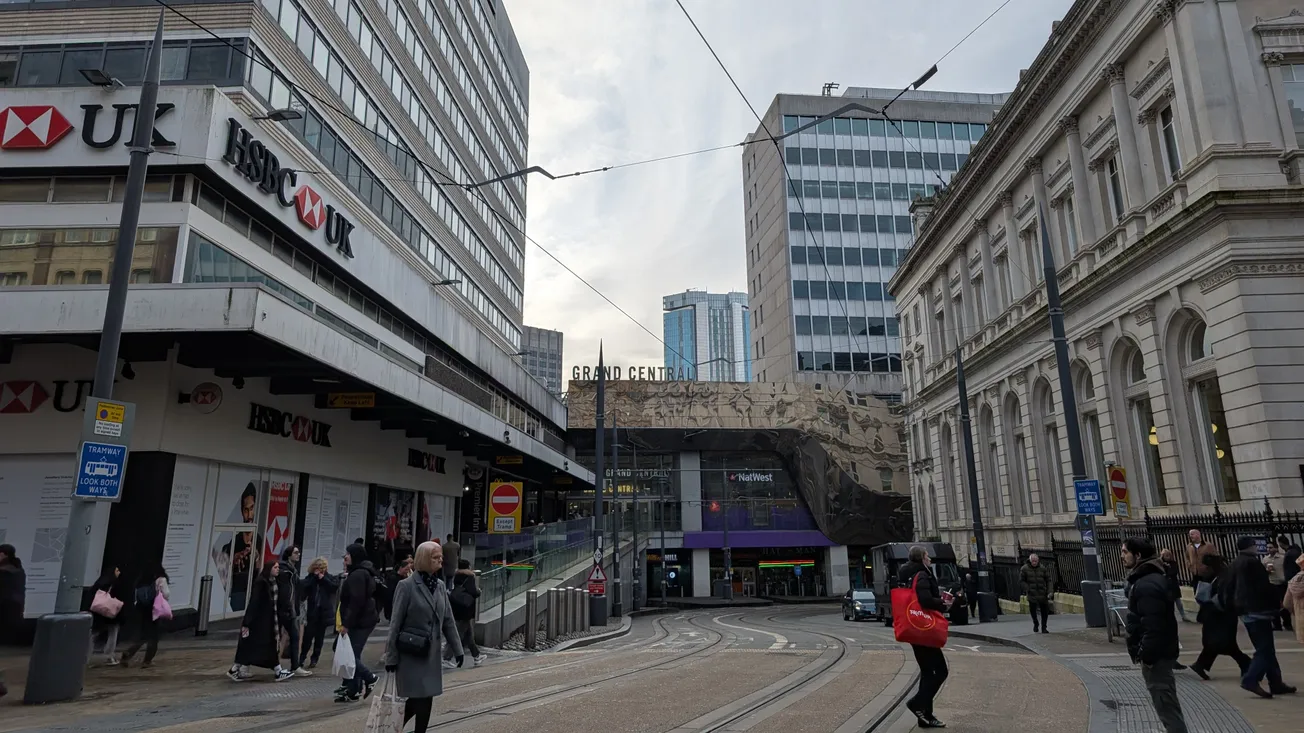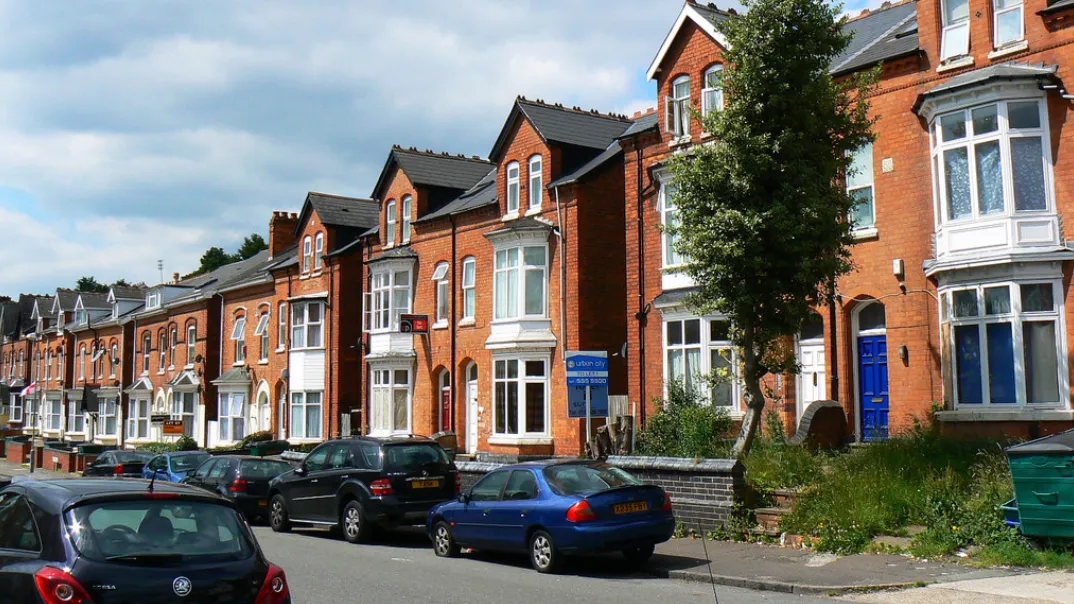In 1860, an unemployed father of six, who had once sold paraffin from a cart in the streets of Hockley, tried his luck with a new metal-pressing business. Two decades later, Joseph Lucas’ bet paid off. The first Lucas factory opened on Hockley’s Great Hampton Street, and it would go on to become a giant of British industry, manufacturing parts for electrical appliances, cars, aircraft and defence equipment.
In the early 1900s, Birmingham was booming. In 1902, the London-based General Electric Company set up its first purpose-built factory, the Witton Engineering Works, in Aston. At its peak, it employed 18,000 people, making it one of the largest electrical engineering complexes in the world, producing everything from household appliances to batteries.
Today, neither company has any real presence in Birmingham, despite their heritage in the city. Lucas is a shadow of its former self, while GEC has vanished. Rebranded as Marconi, it collapsed infamously in 2006.
The decline of both businesses is complex, their stories interwoven with those of the general mismanagement of British industry and the rise of international competition. But what is often missing in the chronicles is the government’s post-war policies towards the growth and success of the West Midlands.
For more than three decades — from the introduction of the Distribution of Industry Act in 1945 to the beginning of the 1980s — it was impossible to set up a new factory in Birmingham, or to expand one, without an “Industrial Development Certificate” (IDC) from the government.
This policy was not limited to Birmingham, but it was enforced stringently there, the idea being to force industry into more deprived parts of the country.
Lucas’ plans for expansion in the city were blocked; instead it established new plants in South Wales. Meanwhile, GEC’s expansion — partly through its Osram lighting subsidiary — happened in Merseyside and the North East, rather than in Birmingham. The motor industry followed suit, opening new facilities in locations such as Speke in Liverpool. This fragmentation damaged the prospects of all the businesses involved — as well as the city that once housed them.
Smaller companies and new industries were also prevented from taking root in the city. It left Birmingham almost uniquely exposed to the economic storms of the 1980s; within just a decade it went from the richest big city outside London to one notorious for its economic underperformance.
'In contrast to its northern peers, Birmingham was a rich, booming city'
The roots of the policy lie in the 1930s. These were the years of the Great Depression and unemployment, when the government was under pressure to help towns that had lost their livelihoods through the decline of heavy industry. Conditions in the North East were dire, but they were not much better in the likes of Yorkshire and Lancashire, where coal and cotton were also under duress.
This decade did much to create the popular image of a hard-done north in need of aid and support. In practice, of course, the situation was more complex, with East London’s docks and shipbuilding in crisis and South Manchester, for example, gaining new engineering jobs at Trafford Park.
Meanwhile, companies such as GEC and Lucas, and the rapidly expanding car, motorbike and cycle industries, were creating unprecedented prosperity. In contrast to its northern peers and indeed parts of the Black Country, Birmingham was a rich, booming city. But to politicians, increasingly concerned with the desperate poverty in other parts of the country, this looked like an unfair distribution of the spoils.
In 1940, against the backdrop of the Birmingham and Coventry blitzes, the Royal Commission on the Distribution of the Industrial Population report — or Barlow Report —- made some pivotal recommendations. The growth of cities, with all their congestion, needed to be checked, the report said, and the population spread more evenly around the country. Constraints on industrial growth in certain areas should be implemented to try to generate more employment elsewhere, it added.
This converged with other policies that had been brewing for rather longer. The dark side of the affluence was the increasingly overcrowded slums in much of the inner ring — a problem that housing reformers like the Cadburys had been pondering for generations. Rather than provide better quality new housing near people’s place of work, as some German cities did, the family campaigned to move employment out of the city, to thin jobs and people out, to build new garden cities or new towns or, failing that, suburbs.
The Cadburys’ influential 1941 report, When We Build Again, argued that the city was too big and crowded. It called for industrial development in Birmingham to be limited, new factories to be encouraged on the outskirts, and residents to be rehoused elsewhere.
The Barlow recommendations found legal form in the 1945 Distribution of Industry Act, which required companies to obtain an IDC if they wanted to build something more than 5,000 sq ft in size in the “congested areas”. Official support, sometimes financial, was meanwhile given for those expanding in the “development areas”, which initially consisted of Merseyside, Scotland, Wales and the North East.
This meant that the IDC regime applied not just to Birmingham, but the whole of the country outside these regions. This included places like Manchester and Yorkshire, although in reality these were treated as grey or ‘intermediate areas’ where the policy was not as rigorously applied.
There was, in any case, much greater demand for expansion in the Midlands and South East than in areas further north. Far more IDCs were routinely refused there — 30 in one year alone in Birmingham, for example. This is just the tip of the iceberg, as many companies were discouraged by the cost and uncertainty of the regime, and the probability of a ‘no’ in response.
Sorry to interrupt. We hope you're enjoying this article. In fact, we hope you're enjoying it so much that you join our free mailing list to get two editions a week straight to your email inbox. Or better yet, right now, you can get a fully-fledged Dispatch membership for just £1 a week, for the first three months.
That's a 50% discount on four weekly editions of richly-reported narrative journalism, plus exclusive access to our events. This old school, boots-on-the-ground work takes time and money. We've already got nearly 1,500 people backing us with their cash. Now you can too, for less than the price of two coffees. Grab it before the end of May.
Westminster’s intention to shrink Birmingham was reinforced in the 1946 West Midlands plan, authored by the distinguished planner Sir Patrick Abercrombie. The city’s industries would be discouraged from expanding, with essential businesses forced out to “overspill towns” such as Tamworth, Lichfield, Worcester and Daventry, as well as later new towns such as Redditch and Dawley (later renamed Telford). Almost a fifth of Birmingham’s 1.1m population was earmarked to go with them; over 200,000 of would be “decanted” elsewhere. A green belt would check Birmingham’s suburban expansion.
Those planning constraints, when combined with the temporary buoyancy of state-supported car manufacturing, created a hothouse effect. Wages soared and the price of land and housing skyrocketed. There was little incentive for young people locally to train or stay in education: a job was guaranteed.
The combined impact was to destroy the diversity and variety of industry in the city as well as the close links between them, the clustering and ‘agglomeration effects’ as economists term them. The city’s economy was frozen in aspic, preventing new industries that would drive future growth (such as pharmaceuticals or aerospace) from setting up locally.
In 1967, a report by the Birmingham Chamber of Commerce claimed that dozens of firms wanted to expand or establish new operations in the West Midlands but were deterred by the IDC regime. This was creating big risks for the region; it risked “economic stagnation” and was “holding back modernisation”.
Over the following decade, the alarm calls grew louder and louder in Parliament, matched only by the stubbornness of central government. In 1975, the Conservative MP for Hall Green, Reginald Eyre, was anxious “about the growing obsolescence in parts of industry in the West Midlands, because, as a result of Whitehall controls, there has been a tendency for the new science-based industries to be diverted to other parts of the country.”
A few years later, the Walsall MP Robin Hodgson (also a Tory) complained that “nowhere has this policy had more disastrous effects than in the urban West Midlands […] successful firms have been forced by the operation of this policy over many years to leave the area. They have been forced to go, first, to South Wales and to development areas and, later, to new towns […] we are left with an increasingly narrow industrial base.”
The reaction from ministers was always the same: we hear you, but our priorities are the north and Wales. They then turned the screw on another part of the city’s economy that was outperforming.
A ‘threatening situation’
Finance and insurance boomed in the city centre and Edgbaston through the 1950s and 1960s. Employment in services had reversed a historic weakness in this area and was now ahead of most other big regional centres. But rather than celebrating this (as they would today), the government complained of a “threatening situation” in an “over-congested area”.
The reaction was the Birmingham extension of the infamous ‘Brown Ban’ in 1965, after being introduced in London the previous year. For any new office space over 5,000 sq ft, an ‘Office Development Certificate’ (ODC) would be required. This produced a furious reaction from the Sutton Coldfield MP Geoffrey Lloyd. “This Order is a kind of penalty on the success of the West Midlands and Birmingham, imposed [...] as they believe, to help somewhere else. There is a growing anxiety in Birmingham that the Government may have carried too far this process of siphoning off the prosperity of the Midlands to other areas.”
He added, extraordinarily perceptively in hindsight, that this was creating an overdependence on the motor industry (which, unlike other industries, had been allowed to expand). Birmingham was “living dangerously in its prosperity”.
The city centre’s white-collar boom was curtailed. Meanwhile, other industries that would drive Britain’s prosperity over the decades since the 1980s — electronics and technology, pharmaceuticals, aerospace — set up shop not in the ‘development regions’ but in the ‘intermediate’ areas: parts of Cheshire or Lancashire, or around Bristol.
Birmingham had once been the resilient “city of a thousand trades”, described in 1969 by the American urbanist Jane Jacobs as “economically vigorous and prosperous”, while Manchester was “the very symbol of a city in long and unremitting decline” as a result of its historic specialisation in the cotton trade.
But she was out of date. Birmingham was becoming exactly the sort of obsolescent, overly concentrated economy she had disparaged. IDCs were far more likely to be approved for the motor industry than any other. Not only did this make the city’s employment and supply chains more dependent on one increasingly sclerotic sector, it also made it reliant on a small number of large companies, many of which had been brought together in the nationalised behemoth of British Leyland.

Parts of Greater Manchester and its hinterland, meanwhile, less encumbered by IDC restrictions and never as specialised as Jacobs’ stereotype, were beginning to develop a larger and more sophisticated base in services and new industries.
When Thatcher arrived to power in 1979, the IDC and ODC systems were repealed. But the dominant philosophy of the period was the free market and laissez-faire; industrial and regional policy were deeply unfashionable. The Thatcher government was no more responsive to the woes of the British car industry — then synonymous with trade union problems — than it was to coal mining.
The diversity of the city’s industries had helped it through economic storms before but this time they had been fatally undermined. The city and the wider West Midlands lost literally hundreds of thousands of jobs. Two decades earlier, what had been the wealthiest region outside the capital became the poorest, with at one point the lowest GDP per head of any English region. Unemployment in parts of Birmingham reached as high as 40%.
The situation has admittedly never been quite as bad since, and there have been periods of optimism and growth — although in a faint echo of those inter-war restraints, the BBC did close its once significant presence at Pebble Mill in the 2000s, ‘decanting’ the jobs to Bristol and Salford. White-collar employment in the city centre has nevertheless increased significantly over the past couple of decades but industrial decline has continued in many areas and there are still few really strong economic clusters outside motor manufacturing. Productivity growth in the West Midlands has been much lower than in, say, West Yorkshire or Greater Manchester, and it has perhaps the most intractable problems of deprivation and unemployment of any large city region.
Of course, other factors impacted Birmingham’s industries too: pre-war tariffs and protectionism, which provided a cushion from international competition, poor management and labour relations, and the lack of proper vocational training. Brum has made some terrible decisions itself, not least to destroy a lot of its historic centre with massive roads. This seemed modern and appealing for a few years, but became deeply unattractive to footloose service industries in later decades. Some of our present difficulties would have arisen without the IDC and ODC edicts.
Government did not, I think, set out with the aim of destroying Birmingham — the rules, after all, also applied to London. But that had indeed been the aim, it could not have come up with a better set of policies than the industrial development controls, followed by a heavy dose of Thatcherism. In the background was the assumption that the West Midlands would always be alright, that it did not need the funding, sympathy or supportive policies given to the North of England or Wales.
In some ways, I am surprised Brummies, for all their stoicism, are not more angry about what was done to their city. Perhaps it is because its history is so often interpreted backwards through the later dominance and then failures of the car industry, which was partly caused by the policies outlined here. That dysfunction in that industry became seen as an intrinsic quality of Birmingham, rather than something partly caused by government policy.

That somewhat undeserved reputation perhaps explains the frustrating indifference, or worse, that central government still seems to show to the plight of the West Midlands, where Donald Trump’s tariffs are now threatening a revived motor industry. There is less political capital lost in having a pop at Birmingham than almost any other city. Consider recent initiatives: the Northern Powerhouse was always more high-priority than the Midlands Engine, which has now of course been quietly abandoned. Birmingham’s recent forced bankruptcy seems related to its status as an easy target.
Last month, the Northfield Labour MP Laurence Turner complained in the Commons of “the squeezed Midlands” not receiving its fair share of government investment. The somewhat dismissive response was hauntingly reminiscent of one of those pushbacks Brummie MPs used to get in the 1960s and 1970s when they complained about IDC policy.
This one is from Sir John Eden, a Conservative Minister of State for Industry, in 1971: “I shall take full account of the situation in Birmingham, but the needs of the development and intermediate areas must continue to have priority.”
Did you know about this period of Birmingham's history? Any forgotten episodes you think people should know more of? Let us know in the comments.









Comments